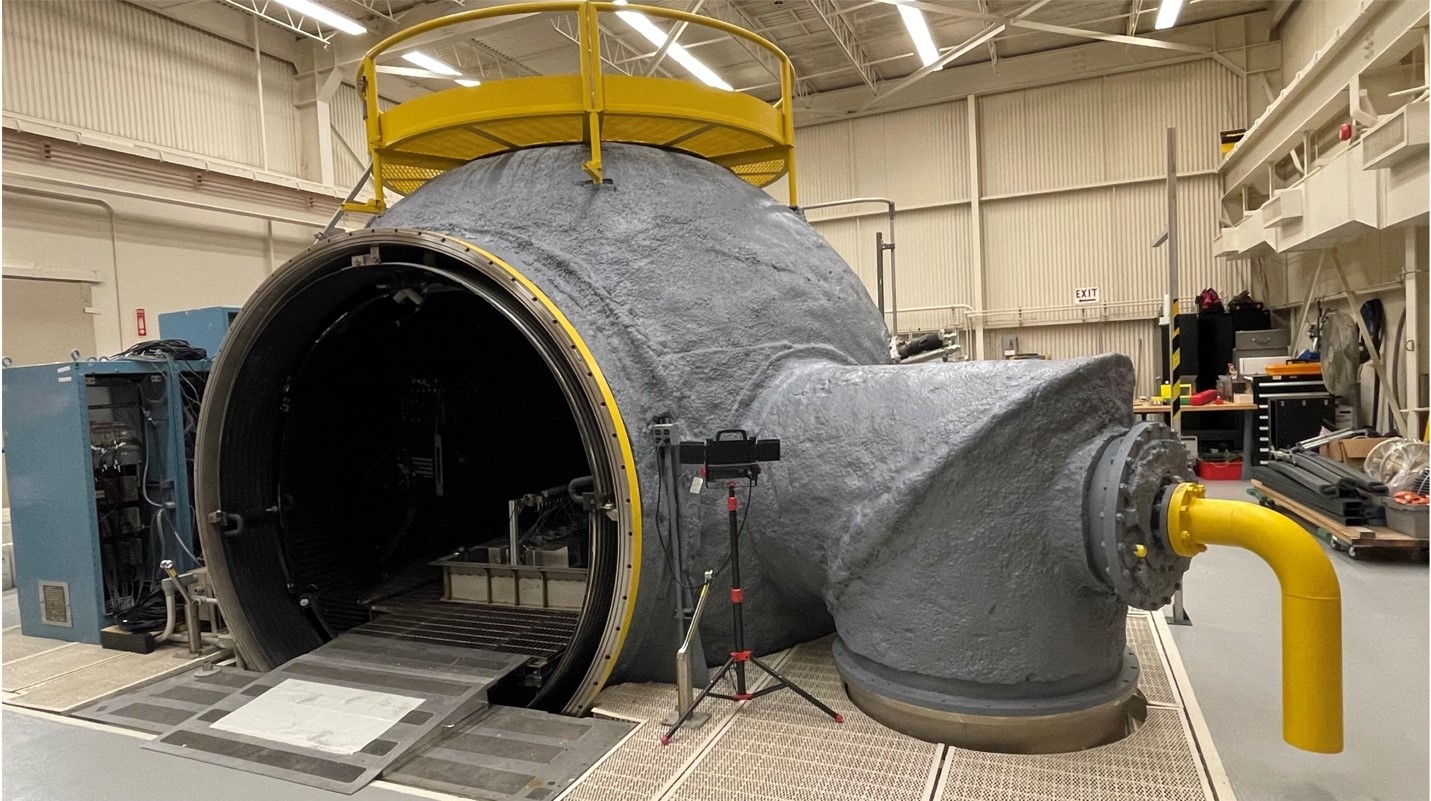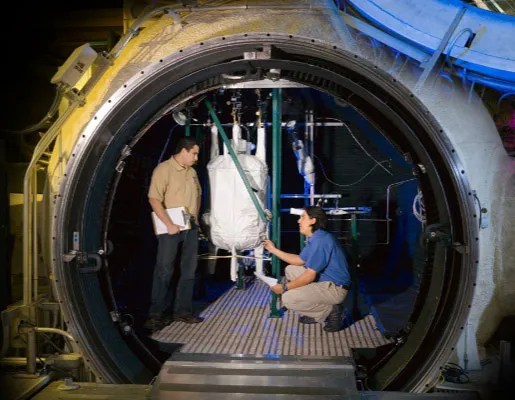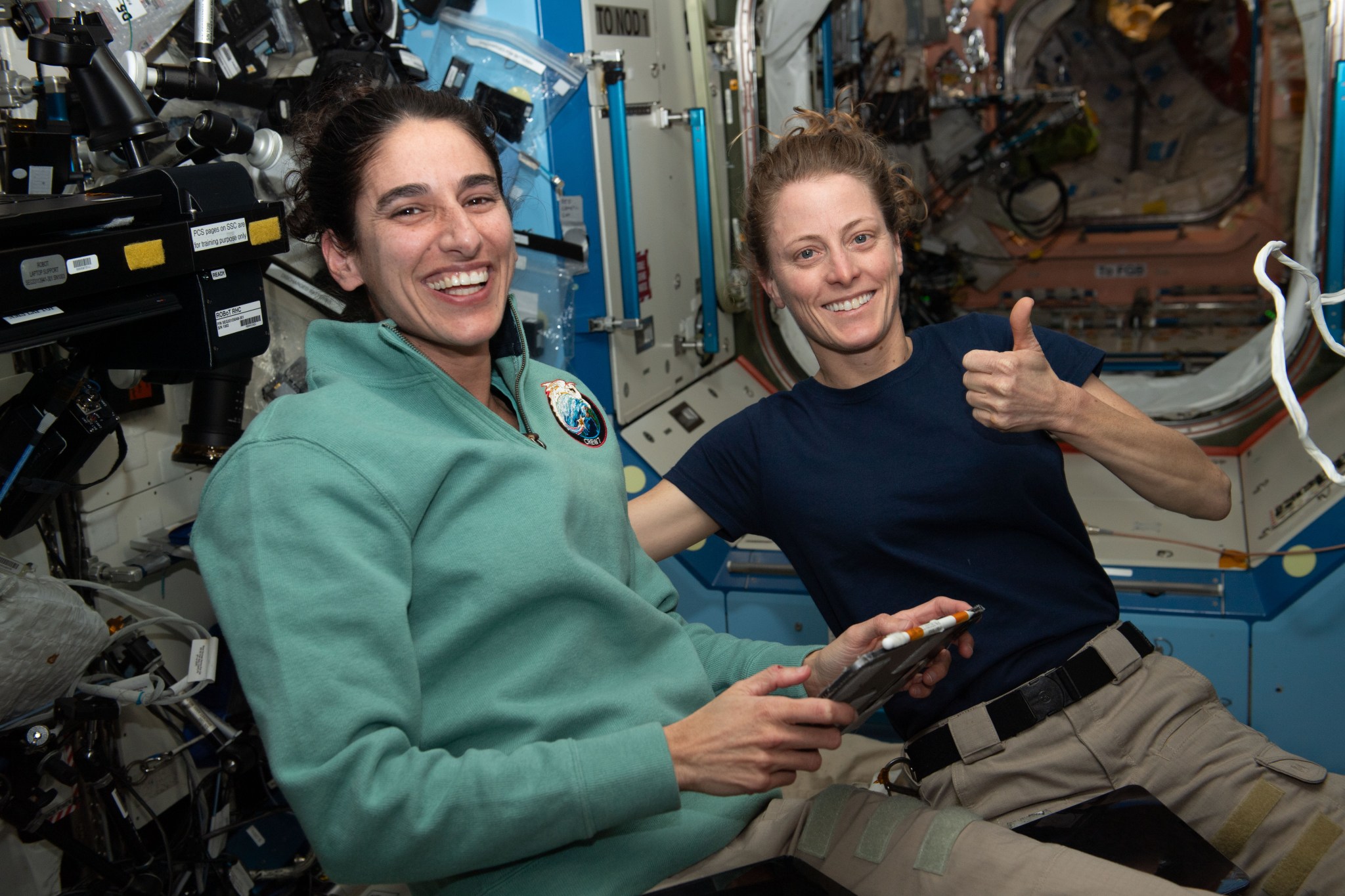Dust

Contents
Introduction
Dust testing is crucial for designing spaceflight hardware destined for the moon to ensure its resilience against lunar surface conditions, preventing potential damage or performance issues caused by abrasive lunar dust particles. NASA JSC boasts a comprehensive suite of capabilities for dust testing, including unique assets to accommodate a wide range of hardware, as well as providing expertise in testing with regolith simulant and other unique requirements. Dust testing capabilities include both ambient dust testing as well as “dirty” thermal vacuum capabilities. The Regolith Simulant Component Test Lab features multiple small vacuum environments and a dispersal test box, offering ambient dispersal capabilities for simulant testing. The 15-foot Dirty Thermal Vacuum Chamber is uniquely designed for dust and planetary surface environments testing. Complementing these facilities is a dedicated Dust Containment and Preparation room, ensuring optimal hardware exposure to dust/regolith. These capabilities invite researchers and developers to leverage NASA JSC’s advanced resources for their own testing and experimentation needs.
Capabilities
15-foot Dirty Thermal Vacuum Chamber
Overview | NASA JSC 15-foot dirty thermal vacuum chamber (TVAC) provides unique testing capabilities for dust and planetary surface environments. The 15-foot chamber is a spherical chamber designed to test advanced concepts, especially for battery power systems, space vehicle actuators and auxiliary power units.
Details |
- 12.5-foot internal diameter spherical chamber with ~78-inch diameter clear entry for easy access
- Vacuum conditions: 1×10^-6 torr to 760 torr
- Thermal conditions: -196°C to +120°C
- Air, GN2 pressurization
- Feed-throughs for high-power electrical connections and high-channel count data
- Control automation enabling low-cost operations
- Ambient dust containment room for regolith control and testing
- Hardware exposure testing to dust / regolith
- Regolith bin for design and test of excavation, processing, or construction technology
Dust Containment and Preparation
Overview | A dedicated preparation room for hardware exposure to dust/regolith and regolith bed preparation is available.
Details | NASA JSC has a specialized facility for the development, handling, and integration of dust and soil simulant materials which require specialized environments.
Regolith Simulant Component Test Lab
Overview | The Component Test Lab offers multiple small vacuum environments for testing in simulant and a simulant dispersal test box with ambient dispersal capabilities.
Details |
- Multiple 1’-3’ thermal vacuum bell jars for testing with simulant
- Ambient 2’ x 2’ x 3’ dust box for quick and easy functional testing with fan-blown simulant
Regolith Simulant Test Bin
Overview | The Regolith Simulant Test Bin offers an enclosed measurable environment for direct contact regolith simulant testing.
Details |
- 48” x 96” surface area for larger test articles or mobility testing
- 8” maximum fill depth
- Interior baffles for partial filling at full depth and efficient use of simulant
- Filled and prepared in dust containment and prep lab to keep other equipment clean
Simulant Test Consulting and Development
Overview | On-site expertise available for successful vacuum operations with prepared simulant samples and test articles.
Details | Subject Matter Expert development of specialized analog Lunar and Mars soil simulants for hardware and system testing, end-to-end from soil development to test execution.

































